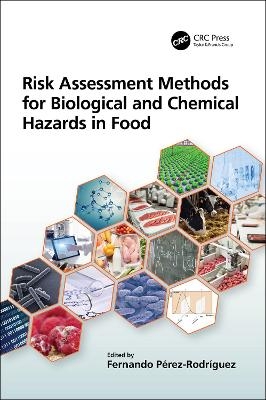
Risk Assessment Methods for Biological and Chemical Hazards in Food
CRC Press (Verlag)
978-0-367-52358-9 (ISBN)
Risk Assessment Methods for Biological and Chemical Hazards in Food introduces the reader to quantitative risk assessment methods encompassing general concepts to specific applications to biological and chemical hazards in foods. In the first section, the book presents food risk assessment as methodology and addresses, more specifically, new trends and approaches such as the development of risk rating methods, risk metrics, risk-benefit assessment studies and quality assessment methods.
Section II is dedicated to biological hazards. This section identifies the most relevant biological hazards along the food chain and provides an overview on the types of predictive microbiology models used to describe the microbial response along the food chain. Chapter 12 specifically deals with cross contamination and the quantitative methods that can be applied to describe this relevant microbial process. The development and application of dose-response models (i.e. mathematical function describing the relationship between pathogen dose and health response) are also covered in this section. In Section III, the book translates risk assessment concepts into the area of chemical hazards, defining the process steps to determine chemical risk and describing the uncertainty and variability sources associated with chemicals.
Key Features:
Presents new trends and approaches in the field of risk assessment in foods
Risk assessment concepts are illustrated by practical examples in the food sector
Discusses how quantitative information and models are integrated in a quantitative risk asssment framework
Provides examples of applications of quantitative chemical risk assessment in risk management
The book, written by renowned experts in their field, is a comprehensive collection of quantitative methods and approaches applied to risk assessment in foods. It can be used as an extensive guide for food safety practitioners and researchers to perform quantitative risk assessment in foods
Fernando Perez-Rodriguez undertook his degrees in Biological Science and in Food Science and Technology from the University of Córdoba in 1999 and 2002, respectively. He completed his PhD in risk analysis from the University of Córdoba (2007), which dealt with microbiological risk assessment and cross contamination in cooked meat products. He has published in the most prestigious international food microbiology and predictive microbiology journals. He has been involved in several research projects at national and international level, conducting quantitative risk assessment studies and investigating cross contamination. He is a member of the International Food Protection Association and the Spanish Society of Microbiology, and he has participated as an expert in cross contamination at different meetings organized by the European Food Safety Authority. He has also taught courses in predictive microbiology and he is professor for the Agriculture and Food Masters degree at the University of Córdoba. Currently, he is professor at the University of Córdoba and University of Pablo de Olavide (Spain).
General Aspects. Food Risk Assessment Framework: Foundations and Concepts. Quantitative Methods for Risk Assessment. Metrics for Risk: Evaluating the Impact of Illness and Disability on Public Health. Risk-benefit Assessment in Foods. Application to Quantitative Risk Assessment Methods for Food Quality. Understanding Uncertainty and Variability in Risk Assessment. Application of Sensitivity Analysis Methods in Quantitative Risk Assessment. Microbial Risk Assessment. Quantitative Methods for microbial Risk Assessment in Foods. Hazard Identification: Emerging and New Microbial Risks Along the Food Chain. Predictive Microbiology Tools for Exposure Assessment. Modeling Cross Contamination and Hand Handler Behavior. Expert Systems Applied to Microbial Food Safety. Dose Response Models for Foodborne Microbial Risk. Uncertainty Analysis in Chemical Risk Assessment. Quantitative Chemical Risk Assessment Methods. How to Cope with censored Data in Chemical Risk Assessment. Use of “Toxigenomic Tools” in Chemical Risk Assessment: Present and Future Perspectives. Examples of Quantitative Chemical Risk Assessments: Use and Application in Risk Management. Nutritional and Food Allergen Risk Assessment: Methods and Future Perspective. Future Applications of Risk Assessments and Concluding Remarks.
| Erscheinungsdatum | 07.04.2022 |
|---|---|
| Zusatzinfo | 30 Tables, black and white; 75 Illustrations, black and white |
| Verlagsort | London |
| Sprache | englisch |
| Maße | 156 x 234 mm |
| Gewicht | 1010 g |
| Themenwelt | Technik ► Lebensmitteltechnologie |
| ISBN-10 | 0-367-52358-2 / 0367523582 |
| ISBN-13 | 978-0-367-52358-9 / 9780367523589 |
| Zustand | Neuware |
| Haben Sie eine Frage zum Produkt? |
aus dem Bereich


